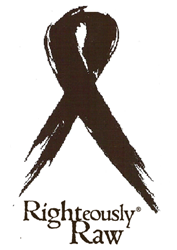If you have celiac disease - or another condition that requires avoiding gluten - you probably got the basics down pretty quickly. It's a no-brainer that things like breads, cakes and beer need to be gluten-free to be on your menu.
But gluten can be found in a number of less obvious foods -- things like pickles, candy and even meat. What's more, not all of them are food. Certain vitamins, supplements and even medications may contain gluten, so make sure all of your doctors, not just your gastroenterologist, are in the loop.
Watch out for some unexpected gluten culprits in the grocery store, then let us know where else you'd never think to look for it in the comments below.
Soy Sauce
You might think the condiment is just made from soybeans, but many soy sauces have wheat in the mix. Today, a number of brands offer gluten-free varieties, so make sure to check before you buy.
Pickles
Certain pickles are off limits. Depending on the pickling process, malt vinegar may be inside that jar, and malt vinegar in turn is made from barley. Other brands may use corn-based vinegar for a gluten-free crunch.
Hot Dogs
Of course you know to skip the bun, but the meat itself? Sometimes, depending on the brand. Certain hot dogs - and sausages - may contain wheat gluten, so be sure to read the labels.
Licorice
The chewy candy often lists wheat flour as one of the first few ingredients, although a number of brands now have a gluten-free option.
Veggie Burgers
Some veggie burgers -- even some homemade patties -- contain wheat gluten, like hot dogs. Other faux meat products rely on gluten as well, since it can give a meaty texture to these veggie replacements.
Salad Dressing
Your dressing of choice probably contains some kind of thickening agent, a number of which contain gluten. Look out for "modified food starch," since its name doesn't make its wheat derivation obvious.
Flavored Potato Chips
Your basic chips (hopefully!) have a pretty simple ingredients list, but certain kinds can get their taste from processed flavorings that contain wheat, barley or rye.
But gluten can be found in a number of less obvious foods -- things like pickles, candy and even meat. What's more, not all of them are food. Certain vitamins, supplements and even medications may contain gluten, so make sure all of your doctors, not just your gastroenterologist, are in the loop.
Watch out for some unexpected gluten culprits in the grocery store, then let us know where else you'd never think to look for it in the comments below.
Soy Sauce
You might think the condiment is just made from soybeans, but many soy sauces have wheat in the mix. Today, a number of brands offer gluten-free varieties, so make sure to check before you buy.
Pickles
Certain pickles are off limits. Depending on the pickling process, malt vinegar may be inside that jar, and malt vinegar in turn is made from barley. Other brands may use corn-based vinegar for a gluten-free crunch.
Hot Dogs
Of course you know to skip the bun, but the meat itself? Sometimes, depending on the brand. Certain hot dogs - and sausages - may contain wheat gluten, so be sure to read the labels.
Licorice
The chewy candy often lists wheat flour as one of the first few ingredients, although a number of brands now have a gluten-free option.
Veggie Burgers
Some veggie burgers -- even some homemade patties -- contain wheat gluten, like hot dogs. Other faux meat products rely on gluten as well, since it can give a meaty texture to these veggie replacements.
Salad Dressing
Your dressing of choice probably contains some kind of thickening agent, a number of which contain gluten. Look out for "modified food starch," since its name doesn't make its wheat derivation obvious.
Flavored Potato Chips
Your basic chips (hopefully!) have a pretty simple ingredients list, but certain kinds can get their taste from processed flavorings that contain wheat, barley or rye.















































